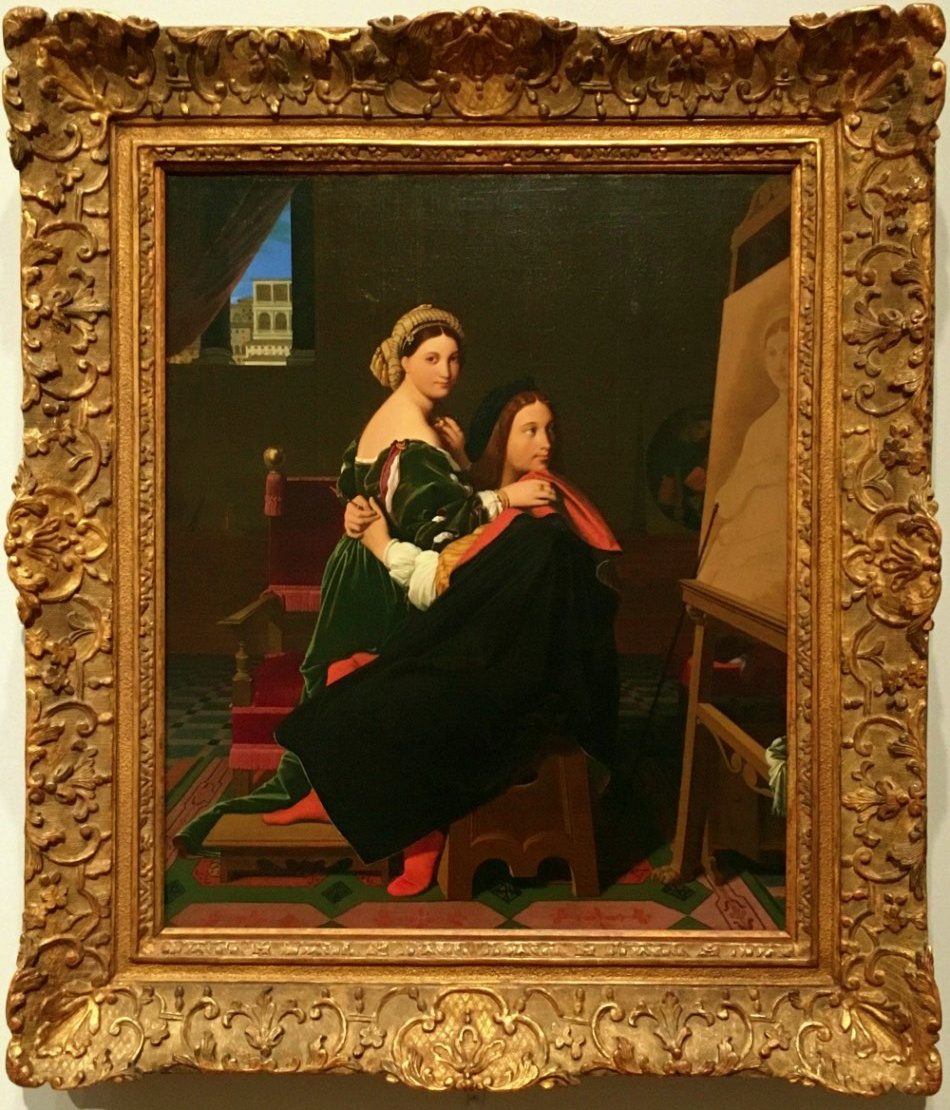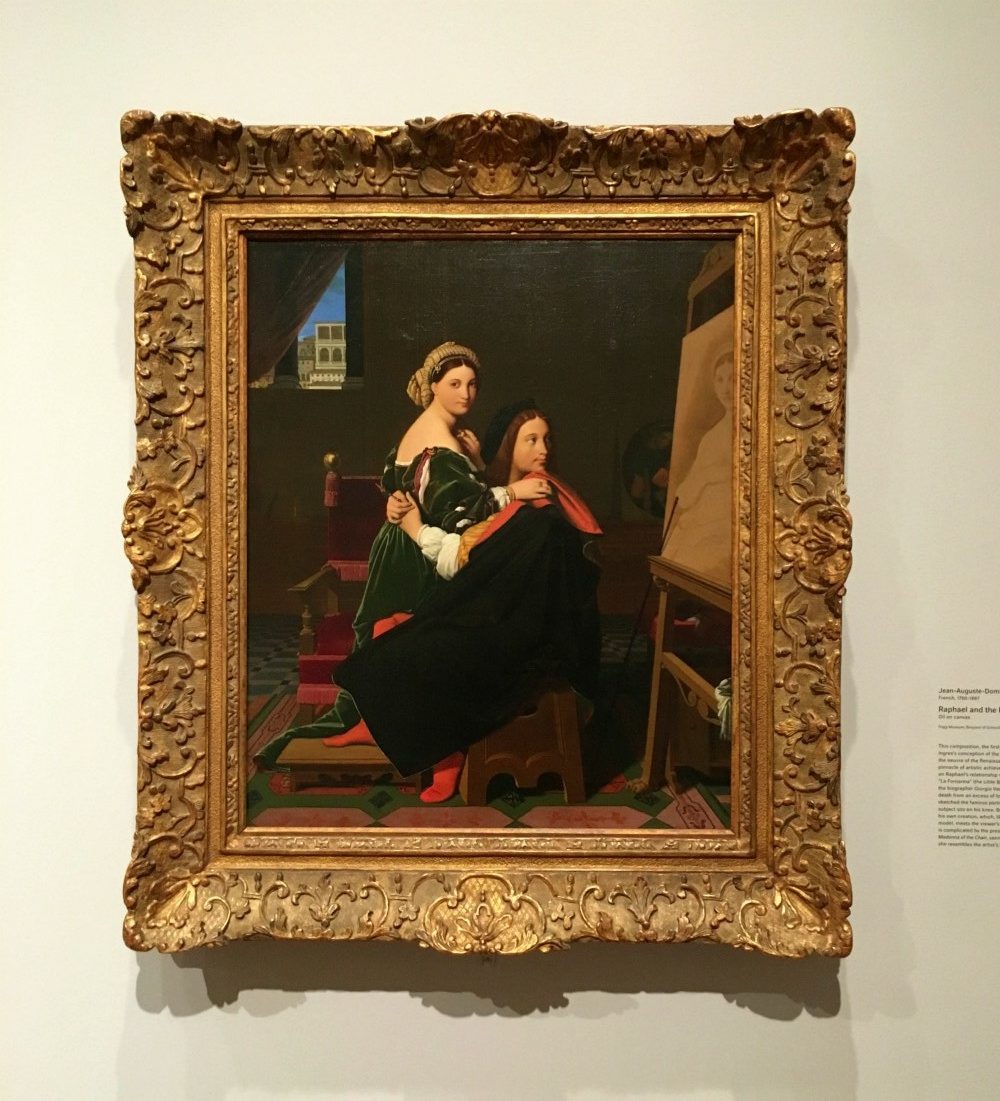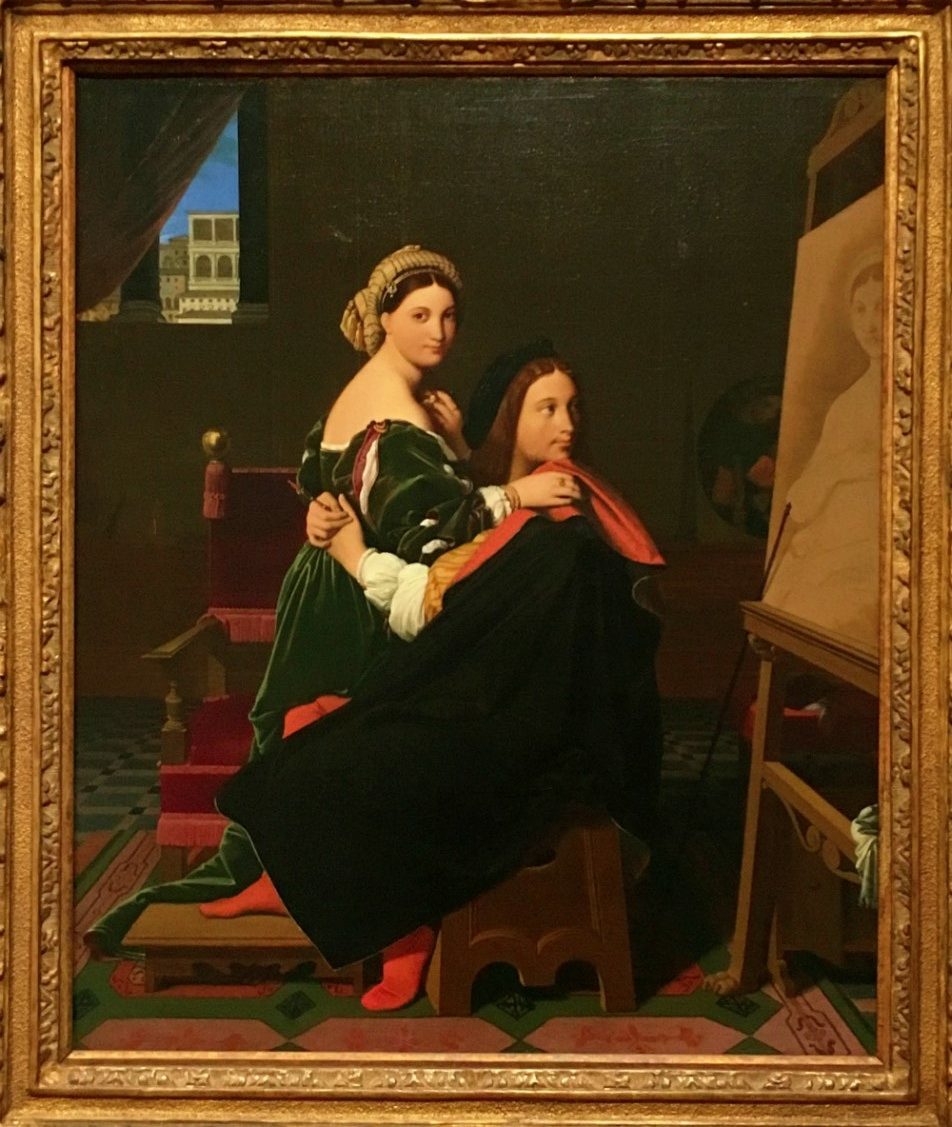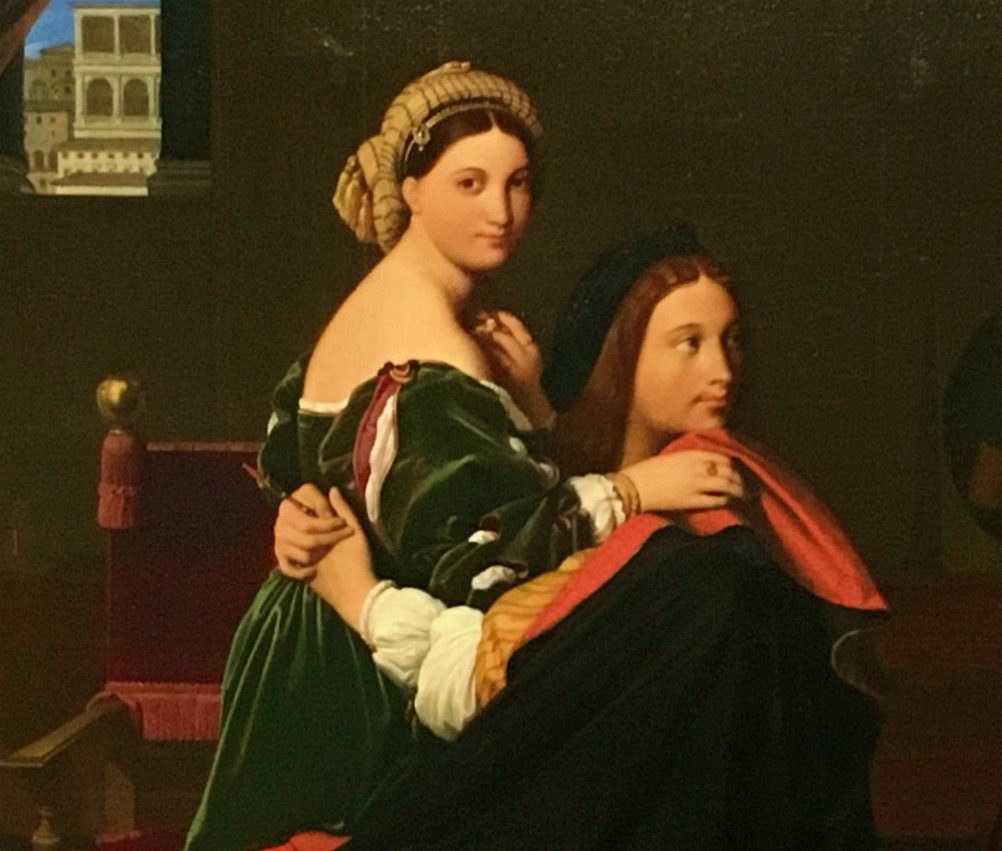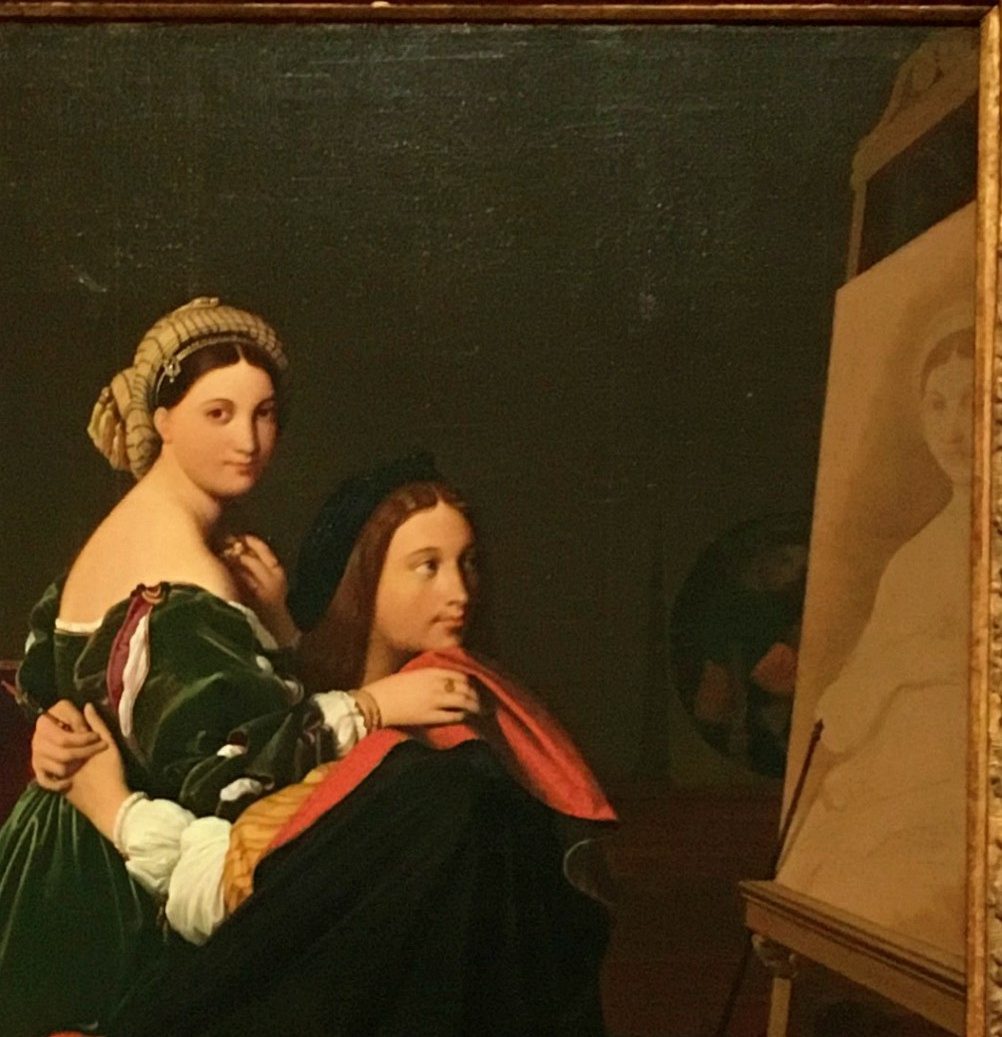For this month's Art in Focus it seemed only fitting to share an artwork about love.
Valentine's Day is honestly a bit silly — with the obscene amount of money spent in one day alone (and on some tacky tchotchkes at that) — but it does serve as a reminder that we should be so loving every day.
Besides, when's the last time you saw a piece of art about love and just walked right past?
Whether a depiction of star-crossed lovers, unrequited love, the loss of love, or pure love shared between two figures — the artist inevitably draws us in.
Enter Jean-Auguste-Dominique Ingres' Raphael and La Fornarina, 1814.
This painting is in the Harvard Art Museums and actually depicts a few kinds of love.
But first, a little background.
Supposedly, the great Raphael was besotted with La Fornarina (Little Baker), and according to Renaissance historian Giorgio Vasari caused Raphael's early death from too much loving...if you catch my drift!
Now, the painting draws the viewer in through several gazes projecting out of the frame — each sharing a different kind of love.
First, we are met by la Fornarina's gaze, meeting us straight on, either beckoning us into the scene or challenging us as she clutches something close to her chest.
Then, we notice something odd — Raphael is not gazing adoringly at his lover (not caring that she's only interested in looking at the viewer).
No, he is completely unaware that she's seen us, and is instead turned to the opposite side of the room where his own real infatuation sits, his painting.
And like a mirror, the depiction of la Fornarina on Raphael's easel also looks out to us — making Raphael's love of his painting practically unrequited.
This also makes me wonder if the real Fornarina on Raphael's lap isn't just showing off to the viewer and is vainly forcing us to confront the fact that she is beautiful and to look at how well her lover can portray her real-life form.
While the sumptuous folds of la Fornarina's gown (you know me, ever drawn to beautiful textiles) and the bright colors jumped out at me the first time I saw this, this trio of glances and varying degrees of love makes this a fascinating painting.
And yes, one other figure lurks in a background painting also staring out at us, perhaps a reminder of a forgotten love or the pure love that has been pushed away by our two main characters' vanity...
Whether you connect with one of these depictions of love or not, I think its safe to say that the whole painting demonstrates how Ingres loved being an artist and the love he had for those that came before him (even if there's a bit of humor in his depiction).

